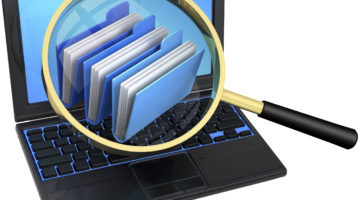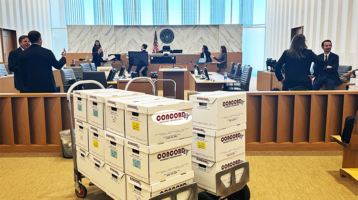Confessions of an E-Discovery Lawyer: What’s the Solution?
There is a light at the end of the tunnel despite the light years we are behind.
Geoffrey Vance, Legaltech News
The following is part two of a two-part series.
In the last issue of Legaltech News, I entered the LTN confessional with a brutally honest admission: Lawyers—not software manufacturers, e-discovery vendors, judges or clients—are primarily to blame for the fact that we as a legal industry are so far behind others in our use of predictive analytics and advanced technology. That now-viral confession prompted a tidal wave of comments, most of which were fair but particularly lengthy and harsh. The one that hit me the hardest, however, was also the most succinct: “Typical law firm partner: You found the problem but didn’t suggest a solution.”
Touché.
What that particular critic did not know was that I divided my article into two parts, with the first part identifying the problem and the second part (this one) focused on trying to find the solution. After some soul searching and a review of the commentary that followed the first part of my article, I’ve come to conclude that there really isn’t a single answer. Rather, there are a number of solutions for which a variety of different legal groups should bear responsibility, namely law schools, bar associations and, of course, lawyers and the law firms at which those lawyers work.
1. Law Schools
With rare exception, legal technology is not a focus of law school classes other than perhaps a basic introductory course on electronic discovery. Indeed, it was recently reported by Bill Hamilton and Michele C.S. Lange that 125 U.S. law schools offer no e-discovery courses at all, and only eight law schools offer e-discovery courses with hands-on training using real-life discovery tools. Consequently, if you accept the premise that lawyers provide better legal services with the assistance of technology, it follows that our soon-to-be-lawyers in law schools are graduating without the practical, technical skillsets necessary to survive and succeed in these modern legal times.
It is my observation that most lawyers fresh out of law school are either intimidated by legal technology or view it as an impediment to their career, when in fact it is that very legal technology which will set them apart from their peers and put them in a position to succeed. Thankfully, there are tech-focused pioneers like Dan Katz at IIT Chicago-Kent College of Law and Adam Candeub at Michigan State University College of Law, both of whom decided to buck the trend by stressing the importance of e-discovery and focusing their professorial teachings on how legal technology can disrupt and improve the business of law. Other well-known litigators (such as Maura Grossman, Craig Ball and Bill Hamilton) also serve as adjunct professors who teach hands-on e-discovery classes, filling what is often a void of tenured law school faculty with sufficient real-world experience to effectively teach practical and useful e-discovery courses.
2. Bar Associations
One of the reasons technology assisted review (TAR) is not universally accepted is because TAR solutions and other legal technology have not had much support from local, state and national bar associations. True, there are technology committees in some of the larger voluntary professional membership organizations such as the American Bar Association, but none have endorsed legal technology with the volume, directness and frequency that is necessary to change the lack of understanding and acceptance of TAR and increase the use of TAR and other technology solutions in our everyday legal lives. If bar associations take the lead on making advanced technology a priority for law students and lawyers alike, law schools that are either accredited or supported by those bar associations and the members of those particular bar associations will almost certainly follow.
3. Lawyers and Law Firms
Law schools should produce more tech-savvy law students and bar associations should more forcefully recognize the importance of technology in our profession, but as I said in my first part of my article, it’s ultimately up to the lawyers and law firms to “identify times when TAR can and should be used and know enough about the client, matter and related data to explain how TAR can reduce client expenses and improve client deliverables.” It simply cannot be disputed that TAR solutions can be incredibly valuable and cost-effective when used the right way on the right cases.
A number of people who commented on my earlier publication suggested that the reason lawyers and law firms have not embraced TAR is that it will significantly reduce billable hours. I disagree with that cynicism. The vast majority of the hundreds of attorneys I have had the privilege of working with and against are principled, ethical people who make decisions they think are in the best interests of their clients. Indeed, the more sophisticated business lawyers understand they need to be ahead of the pack on technology, even if that means less billable hours and less revenue. After all, this is an incredibly competitive law firm market, and clients will not hesitate to dump a law firm if they think that law firm is underperforming or otherwise being piggish and not cost-effective.
The problem is not that attorneys are greedy, it’s that most don’t know enough about the values of technology, and the law firm environments in which most attorneys work are not ideal. For example, the typical law firm e-discovery model is outdated. Most law firms still use associates two to four years out of law school to head up their e-discovery projects. Those more junior associates are thrown involuntarily into the e-discovery work, begrudge their two or three years in that role, and then move on to other types of work, eagerly punting their e-discovery workloads to the next unfortunate, more junior associate. This model is problematic because it creates a measure of displeasure for work that is not only important but also career building. Moreover, the classic law firm environment—where you’re either an attorney or “staff”— creates division and tension among the lawyers on case teams responsible for overseeing each e-discovery project and the non-lawyer technology professionals whose input and involvement are essential for that project to be successful. The best and most successful e-discovery teams involve attorneys and technologists who interact well together and respect and appreciate what each other brings to the table. Indeed, when it comes to TAR, the subject matter TAR expert is often not a lawyer, but rather a person schooled in advanced analytics technology. That non-lawyer TAR expert is often the most important person on a TAR project despite the fact that he or she never went to law school.
Is our industry light years behind our clients in the use of advanced technology? Yes. That’s the bad news. But the good news is there seems to be an increasing recognition of the problem. There are plenty of sophisticated thought leaders in the e-discovery industry who are willing and vocal enough to fix this problem. With the help of law schools and bar associations, I am confident we will start to see real change in the way lawyers and their clients use technology and the number of times we use it. There is a light at the end of the tunnel despite the light years we are behind.


